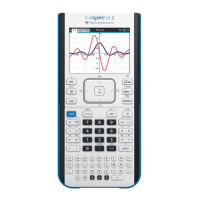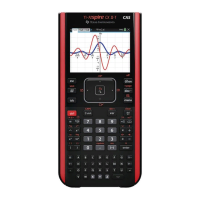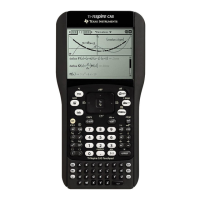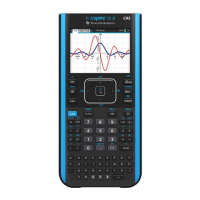Using Lists & Spreadsheet 225
t Cdf (tCdf())
t Cdf computes the t-distribution probability between lowerbound and
upperbound for the specified df (degrees of freedom), which must be > 0.
This distribution is useful in determining the probability of the
occurrence of a value within an interval defined by the lower and upper
bound for a normally distributed population when the population
standard deviation is not known.
Inverse t (invt())
Inverse t computes the inverse cumulative t-distribution probability
function specified by Degrees of Freedom, df, for a given area under the
curve.
This distribution is useful in determining the probability of an occurrence
of data in the area from 0 to x<1. This function is used when the
population mean and/or population standard deviation is not known.
c
2
Pdf
c
2
Pdf computes the probability density function (pdf) for the c
2
(chi-square) distribution at a specified x value. df (degrees of freedom)
must be an integer > 0. The probability density function (pdf) is:
This distribution is useful in determining the probability of the
occurrence of a given value from a population with a c
2
distribution. The
draw option is available when c
2
Pdf is invoked from a formula cell.
c
2
Cdf
c
2
Cdf computes the c
2
(chi-square) distribution probability between
lowerbound and upperbound for the specified df (degrees of freedom),
which must be an integer > 0.
This distribution is useful in determining the probability of the
occurrence of value within given boundaries of a population with a c
2
distribution.
Û
Pdf
Ü Pdf computes the probability density function (pdf) for the Ü
distribution at a specified x value. numerator df (degrees of freedom) and
denominator df must be integers > 0. The probability density function
(pdf) is:
fx()
1
Γ df 2⁄()
--------------------
1/2()
df/2
x
df 21–⁄
e
x/2–
x 0≥,=

